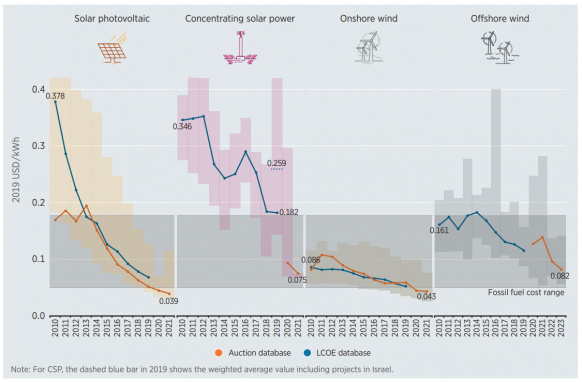Home > Market > Other Regions > Here
US CSP valve leap boosts prospects for hotter plants
2021.01.15 From: reutersevents
New flow control valves being developed by US researchers could help CSP developers meet ambitious cost reduction targets.
Sandia National Laboratories has partnered with global valve and pump group Flowserve and nuclear power developer Kairos Power to develop valves that can withstand far higher temperatures than current designs. The valves feed a heat transfer medium (HTM) - typically molten salt - from the solar receiver to the power generation system.
Falling PV and wind prices have crushed the competitiveness of CSP and higher temperature plants are required to unlock new deployment opportunities. CSP plants typically use molten salt as HTM and current designs limit temperatures to around 560° C. The new valves designed by Sandia and partners will withstand 750° C, offering higher energy conversion efficiency.
The valves must provide constant heat transfer and fluid flow and withstand extreme temperatures, pressures and flow rates that can be worsened by low outdoor temperatures. Materials can swell, bend and warp, requiring maintenance and reducing plant output. Valve issues were identified among a number of key performance risks in the world's first global best practice report for CSP plants, published by the US National Renewable Energy Laboratory (NREL) in June.
Sandia and partners will use a new design and materials to improve reliability at key stress points in the valve and minimise costs, Ken Armijo, project lead at Sandia, told Reuters Events.
“Thermal-mechanical stresses will be the most important to consider from a performance and reliability standpoint,” Armijo said.
The design could also reduce the number of valves required and maintenance could be performed far faster than current methods, he said.
The valve could accommodate alternative HTMs to molten salt and be used in other high-temperature energy sectors such as nuclear power and petrochemicals.
Taming heat
Sandia was allocated a $2.5 million grant from the Department of Energy (DOE) for the valve research.
The DOE aims to reduce the cost of CSP with 12 hours storage to $50/MWh by 2030, down from an estimated cost of $103/MWh in 2017. The department will soon announce the winner of its Gen3 CSP program to build a high-temperature CSP system using either liquid, solid particle, or gaseous materials. Sandia is competing against Brayton Energy and the National Renewable Energy Laboratory (NREL) for a $25-million DOE grant to build a pilot plant.
Levelised cost of solar, wind (global average) (Click image to enlarge)
Source: International Renewable Energy Agency: 'Renewable Power Generation Costs in 2019.'
Other high-temperature projects are underway. This year, a group of European companies will build a pilot ceramic particle concentrated solar tower plant at a Barilla pasta factory in Italy. The 'HiFlex' plant will use centrifugal solar technology developed by the German Aerospace Centre (DLR) to supply heat for the drying of pasta.
To address the extreme stresses on the flow control valves, Sandia and partners are developing a self-contained thermal management system (STM) and a heat pipe valve stem that distributes the heat more evenly, minimising stresses at welds, seals and gaskets.
The STM is an alternative to "heat tracing," a commonly-used mechanism for pipe temperature management. The STM consists of a heater and temperature sensors which are controlled by a distributed control system (DCS).
Heat distribution is improved through an integrated heat pipe that increases conductivity through the valve stem.
Sandia plans to use stainless steel materials with corrosion resistant weld overlays to cut the cost of the valves while ensuring strong durability, Armijo said. Current molten salt flow control valves use higher cost chromium-based materials and nickel-based materials cannot withstand the higher temperatures.
Sandia is considering a range of manufacturing approaches within its techno-economic analysis and will define its cost target by the end of the second quarter, Armijo said.
To minimise costs, the team plans to simplify the design of the valves as much as possible and reduce the required number of valves and flowmeters.
The reduction in valve numbers will depend on the system design, Armijo said. For its U.S. DOE Gen 3 CSP 1 MWth pilot-scale design, Sandia is considering placing the flow control valves after pumps and in recirculation loops for greater flow control, he said.
Shorter stops
Sandia is also developing a quick-change design that will allow the packing to be replaced without disassembling the valve opening mechanism or removing the valve bonnet or bolting.
"This could greatly speed up the maintenance process and could eliminate packing configuration errors which could impact system operation," Armijo said.
Industry data shows that more rigorous installation methods and operational training are required to reduce faults.
To date, most valve faults have been due to inappropriate valve selection or poor operations and maintenance (O&M) practices, Bruce Kelly, senior engineer at Solar Dynamics and co-author of NREL's best practices report, told Reuters Events.
"Mismatches include valves which are properly sized for design flow conditions, but are much too large for startup (low flow) conditions," Kelly said.
"Poor maintenance includes failures to replace defective heat trace cables [or] trying to extend the replacement intervals for the stem packing," he said.
Factory flows
Flowserve will manufacture two prototype valves for the project, one of which will incorporate the quick-change packing system.
Key performance priorities will include leak prevention, temperature control and ease of maintenance, Mike Nelson, Principal R&D Engineer at Flowserve, said.
Kairos will test the valves and other molten salt instrumentation using a bespoke isothermal batch flow valve test system located at its facility in Alameda, California.
Kairos will evaluate flow, pressure drop, and "overall functionality" under various operational scenarios, including freezing weather events, Alan Kruizenga, Director, Salt Chemistry at Kairos Power, said.
The project will benefit from Kairos' learnings in nuclear power research. Kairos has developed a fluoride salt-cooled high temperature reactor (KP-FHR) and aims to build its first test reactor at the East Tennessee Technology Park (ETTP) in Oak Ridge. Last month, the DOE allocated Kairos $303 million towards its nuclear plant program.
Kairos has focused on "iterative learning” through “rapid plan, design, build, and test cycles," Kruizenga noted.
This rapid test approach should help Sandia meet its target of a fully-tested final valve design by the end of 2022.
Robin Sayles
More from CSP Focus
NextShedding some light on innovations in Concentrated Solar Power
China Rayspower Yumen 50MW CSP PT Project confirms Basic and General Engineer
Sodium-based Vast Solar Combines the Best of Trough & Tower CSP to Win our Innovation Award
Spanish CSP plants increase output by 8% y/y in Jan-May 2019
2018, the year in which the Concentrated Solar Power returned to shine
Analysis of Concentrated Solar Power Project Trace Heating Failures
Leave your thoughts here
Reports(Member Only)
See more+-
CSP Focus Membership Proposals
We are now proposing CSP Focus Membership, hoping to better serve our members to keep pace with the latest updates of ongoing CSP projects worldwide, and to establish and maintain business relations with major shareholders of the projects. CSP Focus offers to Membership exclusive access to:1. Daily/Weekly update and analysis on CSP policies, projects, technologies, market trend and corporate relea
-
The Latest CSP Focus Monthly Update
Join CSP Focus Membership to Get the Latest CSP Focus Monthly Update December Edition.
-
CSP Project Monthly Update 2022 December Edition
CSP Focus is presenting CSP Project (China) Update 2022 December Edition.Detail report is available for CSP Focus Membership.
-
Presentations-CSP Focus China 2021
The Report is for CSP Focus Members only.
Upcoming Events
See more+-
12th CSP Focus China 2022
2022.04.21-22 Beijing
-
11th CSP Focus China 2021
2021.10.28-29 Beijing
-
10th CSP Focus China 2020
2020.10.22-23 Beijing, China
Project Updates
See more+-
Lanzhou Dacheng Dunhuang CSP Project
Asia Pacific-China,Operational,Parabolic Trough
-
Luneng Haixi 50MW Molten Salt Tower CSP Project
Asia Pacific-China,Operational,Power Tower
-
Dubai 950MW NOOR Energy 1 CSP+PV Project
MENA-UAE,Under construction,Power Tower
-
Power China Gonghe 50MW Molten Salt Tower CSP Project
Asia Pacific-China,Operational,Power Tower






